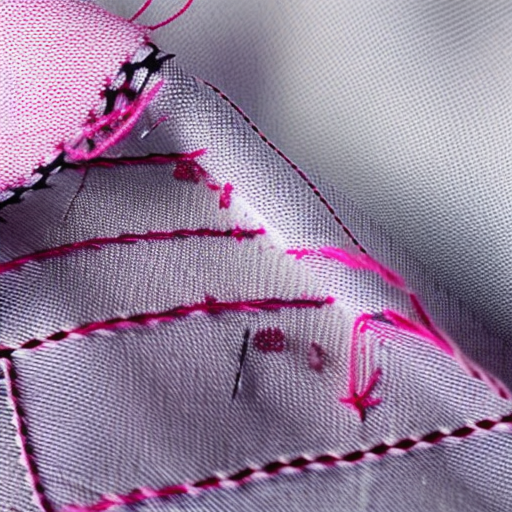
Sewing is an ancient craft that has been practiced for centuries. It involves joining fabrics or materials together using a needle and thread, with various types of stitches being used to achieve different effects. Stitches serve different purposes and understanding their uses can greatly enhance your sewing skills and allow you to create beautiful, durable and functional projects.
1. Straight Stitch
The straight stitch is the most basic and commonly used stitch in sewing. It is a simple stitch that goes straight up and down, and is created by inserting the needle through the fabric to the back and then bringing it back up. The straight stitch is perfect for sewing seams, darts, and topstitching. It provides strength and stability to your sewing projects.
2. Zigzag Stitch
The zigzag stitch is a versatile stitch that creates a zigzag pattern by alternating between forward and sideways movements. It is commonly used to finish raw fabric edges, as it prevents fraying and adds durability. The zigzag stitch is also ideal for sewing stretch fabrics, as it allows for a bit of stretch while maintaining seam strength.
3. Basting Stitch
The basting stitch is a temporary stitch used for holding fabrics together before sewing them permanently. It is created by using long, loose stitches that can be easily removed later. Basting stitches are useful for fitting garments, positioning appliques, or creating gathers and pleats. They provide a guide for sewing and help ensure accurate and precise stitching.
4. Backstitch
The backstitch is a strong and durable stitch used for joining seams or reinforcing stitching. It involves stitching forward a couple of stitches, then stitching backward to the starting point, and repeating. The backstitch is ideal for sewing buttons, attaching patches, or any area that requires extra strength and security.
5. Blind Hem Stitch
The blind hem stitch is a nearly invisible stitch used for hemming garments. It creates a seamless finish on the outside of the fabric while securing the raw edge underneath. This stitch is commonly used for hemming skirts, pants, or dresses, giving them a professional and polished look.
6. Overlock Stitch
The overlock stitch, also known as a serged stitch, is typically created using a serger machine. It trims the fabric edge while simultaneously enclosing it with thread, preventing fraying and providing a neat finish. This stitch is commonly used for sewing seams in knit fabrics or finishing edges on towels, napkins, or linens.
By mastering these stitches and understanding their uses, you can elevate your sewing projects to new levels. Whether you’re a beginner or an experienced sewist, experimenting with different stitches can add creativity and functionality to your creations. So, grab your needle and thread, and let your imagination and skills stitch together garments, accessories, home decor items, and more!





Sewing is such a useful and inspiring hobby!
Kate Miller: So true! I love creating my own pieces of clothing and seeing them come together.
Sewing is an amazing way to express creativity and unique style! From making apparel to accessories to home decor, there are endless possibilities and projects to tackle with a needle and thread. The satisfaction of finishing a handmade project is totally unmatched.
Absolutely! Sewing is always rewarding me. I like how diverse it is and the creative expression it brings. Plus, you can find great tutorials online to guide you through and help you learn.